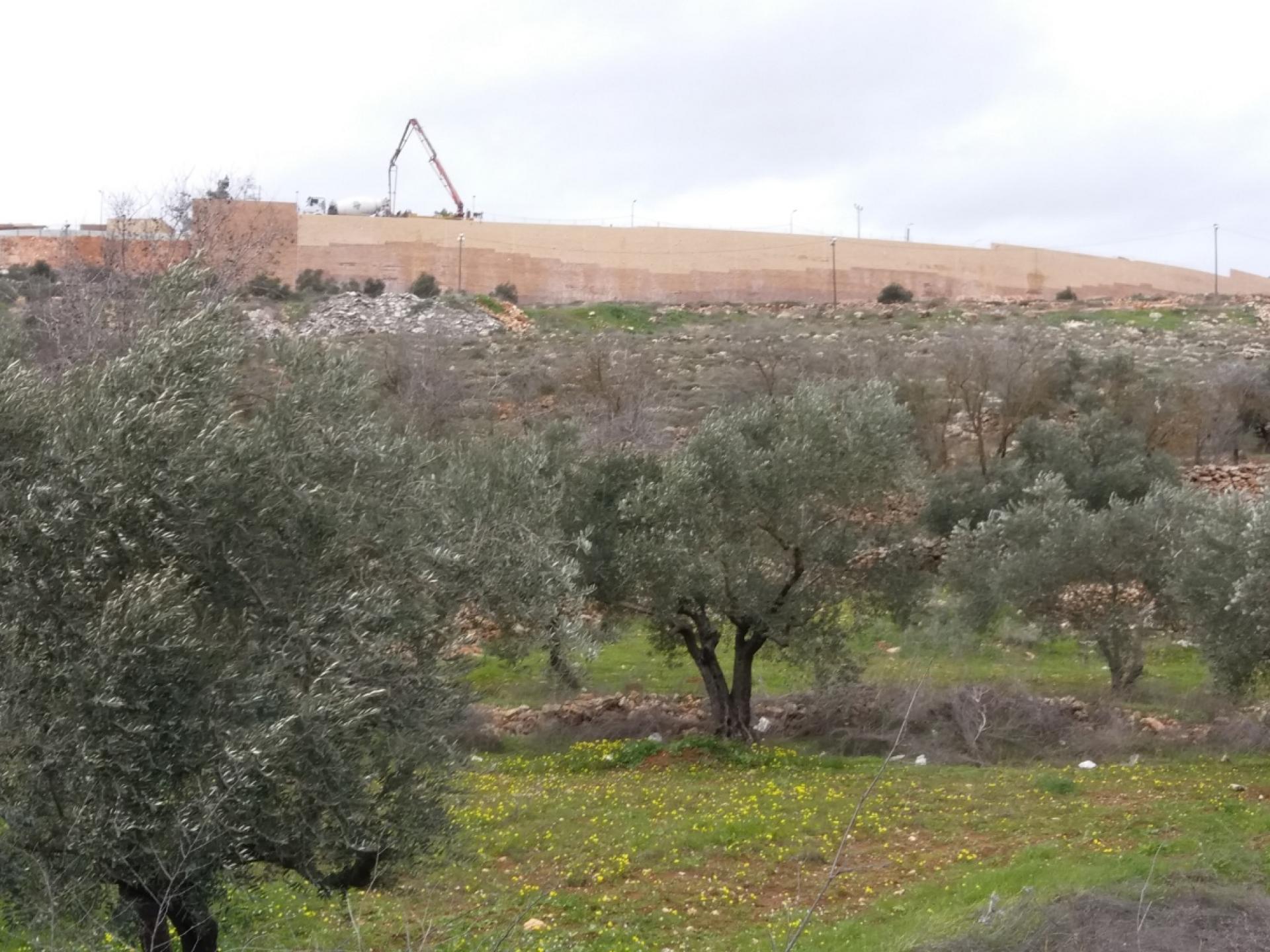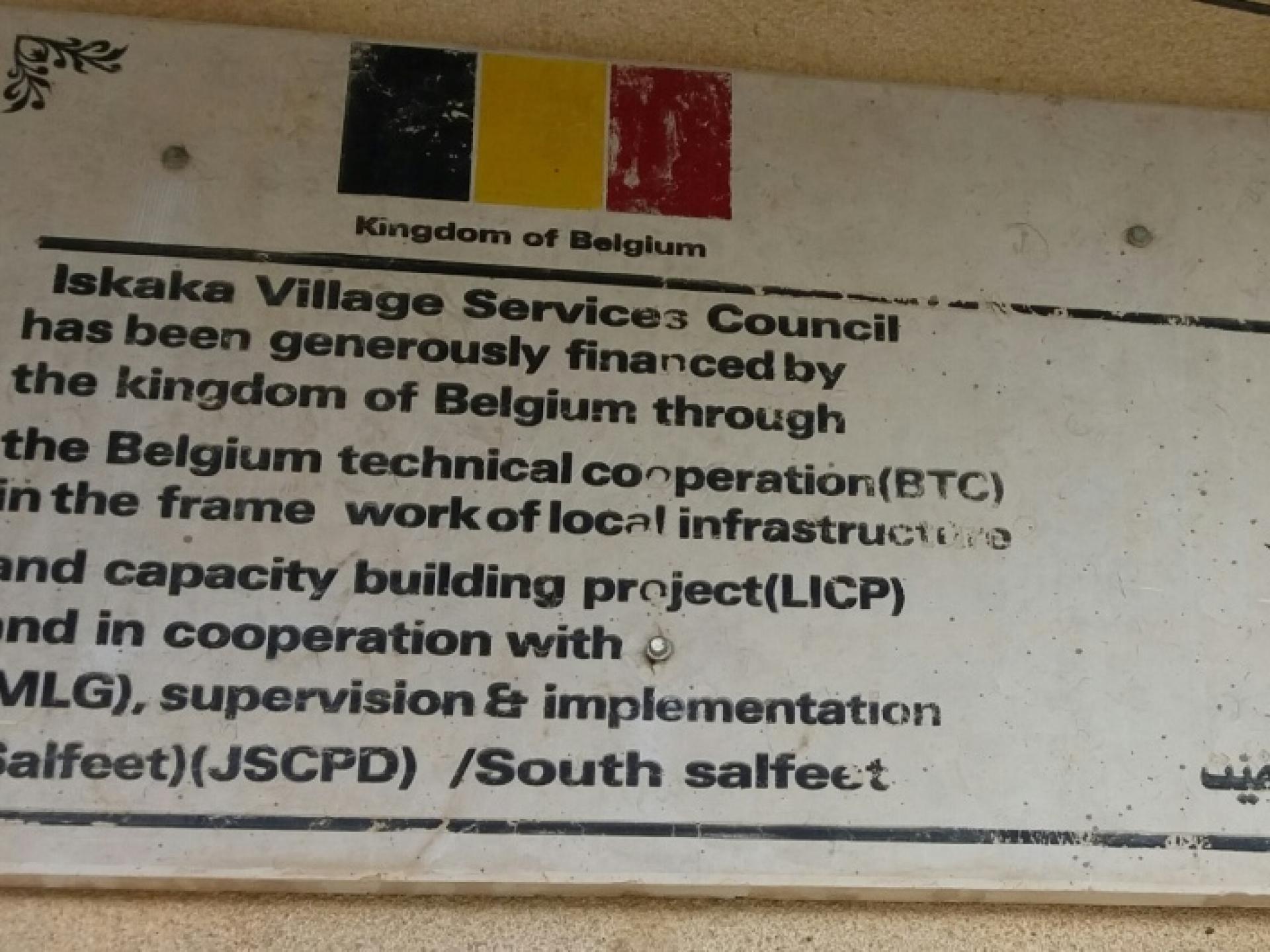Marda, Iskaka and Qabalan, located in the Salfit and Nablus vicinity
We drove to the villages municipalities even though we hadn’t any phone numbers to make appointments. This time we had minimal success, but we did receive phone numbers to make appointments in the future.
09:30 No plant nursery trucks at Eliyahu checkpoint. Five cars at the inspection station in the shed.
We continued to ‘Azzun to drop off parcels.
Marda – Salfit sub-district.
The village is located north of Ariel.
The head of the municipality, a dentist, was working in his clinic. His deputy is abroad. There was no one to speak with. We wanted to see the ecological farm we’d visited a few years earlier. The secretary didn’t know of it but a guy we ran into showed us the way. Unfortunately, the farm’s owner was not there and it was closed.
We got on highway 505 and continued to the Tapuach junction.
Iskaka – Salfit sub-district


We picked up a hitchhiker who told us he’s a senior official in the Palestinian Authority. In 2002 he was jailed for three years in Israel; consequently he can’t get a permit to pray at Al Aqsa.
The head of the municipality isn’t there and we continue eastward.
A wall on the right conceals the extensive construction in the Rehelim settlement, where the Pri Ha’aretz yeshiva is located. The Jewish terror suspects are enrolled there.
We continued west to Qabalan – Nablus sub-district
At the municipality we met a few people who were willing to talk with us. The building is large, spacious and modern, unlike any we’ve seen on the West Bank. It even has central heating. It was funded by the Palestinian Authority. The director of the municipality has been in his job for only three months and still isn’t well-versed in all the details.
Qabalan has some 8,500 inhabitants. The municipality includes the neighboring villages of Talfit, Jaloud and Jourish.
Water – Mekorot is responsible for water supply. The settlements have priority over the Palestinians. Difficulties exist primarily during the summer. Though some homes have wells, there’s barely enough water for one month.
Mekorot supplies one-fourth of the water they need. The municipality recommends that residents dig wells, especially when they’re building new homes.
Education – There’s a shortage of classrooms. High school students from surrounding villages attend school in Qabalan. The classrooms are very crowded.
Electricity – supplied by the Israel Electric Company. There are no problems.
Olive harvest – There’s no end of problems. As is the case in all villages surrounded by settlements (Eli, Rehelim), there are areas they’re not able to access. During the harvest they’re harassed by the settlers. They’re chased away with sticks and rocks. The residents own some 150,000 dunums. Most are planted with olive trees.
A week ago settlers threw rocks on Rami Hamdallah, the prime minister.
Many residents of Qabalan work in Israel. They enter through the Eyal checkpoint.
